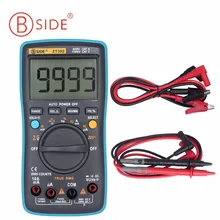Wednesday, July 27, 2011
Tuesday, July 26, 2011
Regarding The Rice Cooker
URANUS RICE COOKER REPAIRED PART -2
Authored by Beh.
In
part one of this report I changed the thermal fuse and the machine starts to
work
And
I start to cook rice to test the rice cooker
but the rice cooker failed again and fuse blow again ! This is possible only due to malfunctioning of thermostat
and fuse blow because of to much
heat even more than 139 degree celsius (more
than breaking point of thermal fuse )
Yes
the thermostat is another suspect but
what is the thermostat?
A thermostat is the component of
a control
system which
regulates the temperature of heating or
cooling system
so that the system's temperature is maintained near a desired setpoint
temperature. The name is derived from the Greek words thermos "hot"
and statos "a standing". The thermostat does this by switching
heating or cooling devices on or off, or regulating
the
heat in the rice cooker and
any other heating machine
In
this rice cooker the thermostat failed to regulate the temperature and thermal
fuse acts as safety component and break the circuit to prevent fire from rice
cooker.
In
this rice cooker a bimetal spring is installed as thermostat
Spring
is inside a metal capsule when the heat exceed more than temperature that is
required for cooking the rice in proper time.
spring bimetal thermostat
By
changing the length of spring pushes a piston and piston turns off the internal
switch of rice cooker by changing the
spring thermostat with a new one rice
cooker start to work again.
Conclusion:
the blowing the fuse at first time was because of the malfunctioning of
thermostat not life span of fuse itself.
Wednesday, July 20, 2011
Rice Cooker Repair
URANUS RICE COOKER 350W 220V capacity 0.6
L
This article repair of rice cooker is from my good friend Beh. He is from Iran.
Recently I received above rice
cooker from one of my friend and
He said the rice cooker is not
working .By opening the back cover
I found just one mechanical switch
and also the heating element and
Thermal fuse SF 139 E
(S is type name of fuse 139 is operating temperature that fuse act) by
testing with analog meter fuse showed that
Is open and by testing the circuit
by a jumping wire i assured that the fuse
Is blown and by changing with same
rate fuse 220 V 10 A rice cooker start to work
now rice cooker start to work but really I do not know the thermostat
Is good or not ?
 AliExpress.com Product - BSIDE ZT301/ZT302 Ture RMS Digital Multimeter 9999 Counts Multifunction AC/DC Voltage Temperature Capacitance Testers DMM RM109
AliExpress.com Product - BSIDE ZT301/ZT302 Ture RMS Digital Multimeter 9999 Counts Multifunction AC/DC Voltage Temperature Capacitance Testers DMM RM109
 AliExpress.com Product - BSIDE ZT301/ZT302 Ture RMS Digital Multimeter 9999 Counts Multifunction AC/DC Voltage Temperature Capacitance Testers DMM RM109
AliExpress.com Product - BSIDE ZT301/ZT302 Ture RMS Digital Multimeter 9999 Counts Multifunction AC/DC Voltage Temperature Capacitance Testers DMM RM109
But what is a thermal fuse?:
A thermal fuse is a cutoff which uses a
one-time fusible link. Unlike the thermal switch which automatically resets itself when
the temperature drops, the thermal fuse is more like an electrical fuse: a single-use device that cannot be reset and must be
replaced when it fails or is triggered. A thermal fuse is most useful when the
overheating is a result of a rare occurrence, such as failure requiring repair (which would
also replace the fuse) or replacement at the end of service life.
One mechanism is a small meltable pellet that holds down
a spring. When the pellet melts, the spring is released, separating the
contacts and breaking the circuit. The NEC Sefuse SF/E series, Microtemp G4A
series and Elmwood D series, for example, use pellets that contain Copper, Beryllium, and Silver.
Thermal fuses are usually found in heat-producing
electrical appliances such as coffeemakers and hair dryers. They
function as safety devices to disconnect the current to the heating element in case of a malfunction (such as a defective thermostat)
that would otherwise allow the temperature to rise to dangerous levels,
possibly starting a fire.
Unlike electrical fuses or circuit breakers, thermal fuses only react to excessive temperature, not
excessive current, unless the excessive current is sufficient to cause the
thermal fuse itself to heat up to the trigger temperature.
Such an arrangement may be found in a surge protector. The thermal fuses are
wired in series with the varistors; when the
varistors conduct, the fuse heats up and fails, which eliminates the risk of
fire.
In this unit varistor is
not employed.




